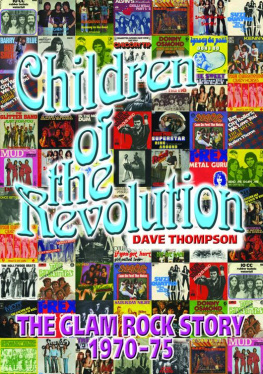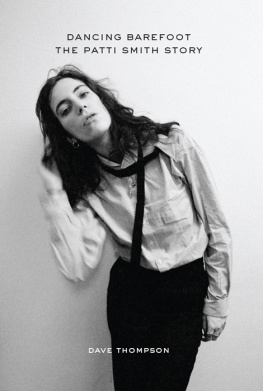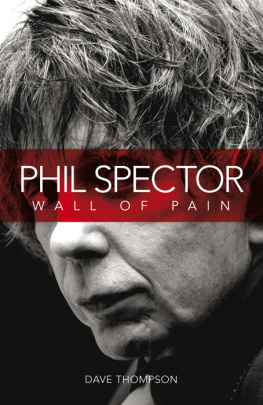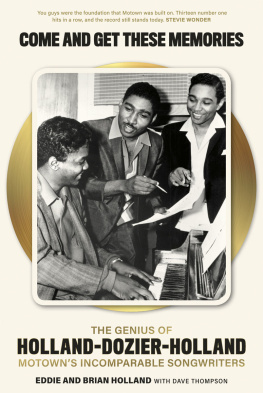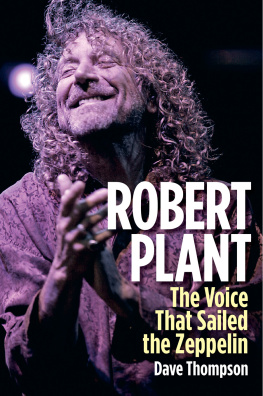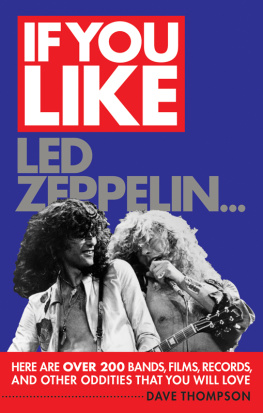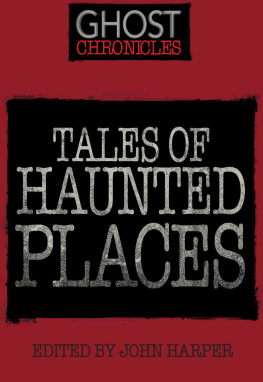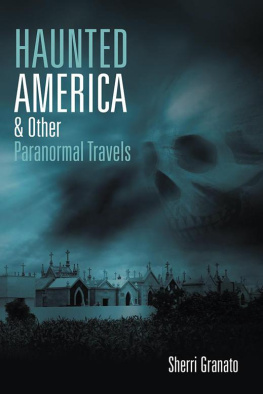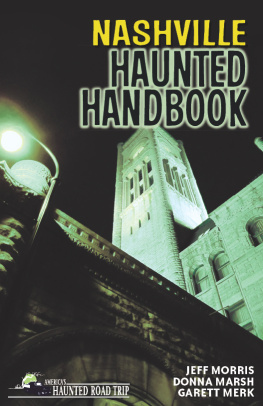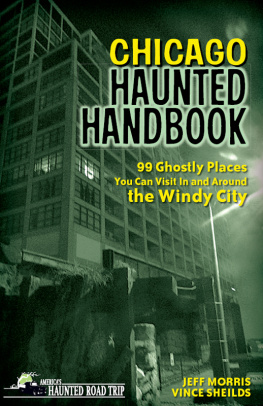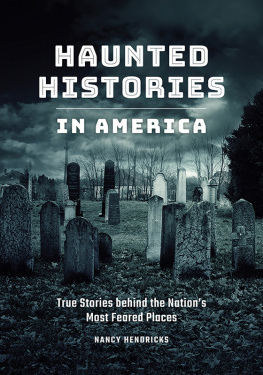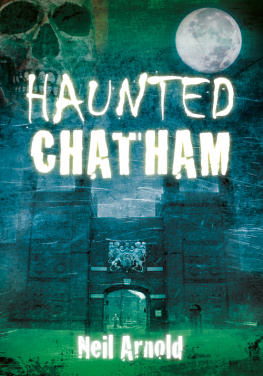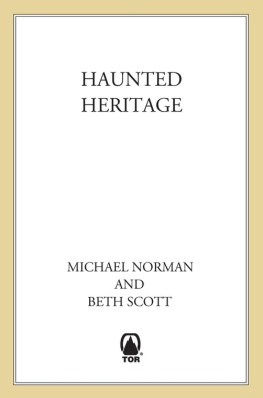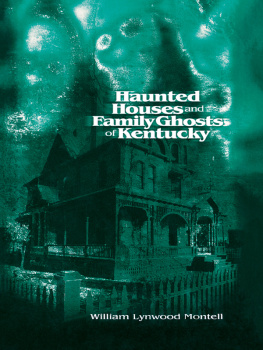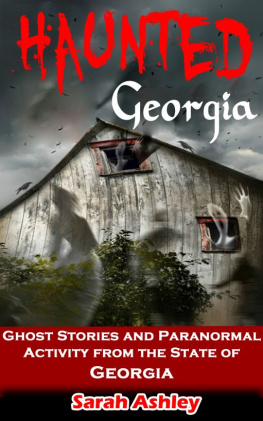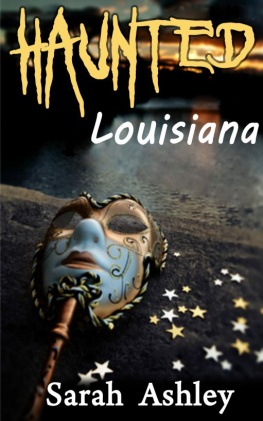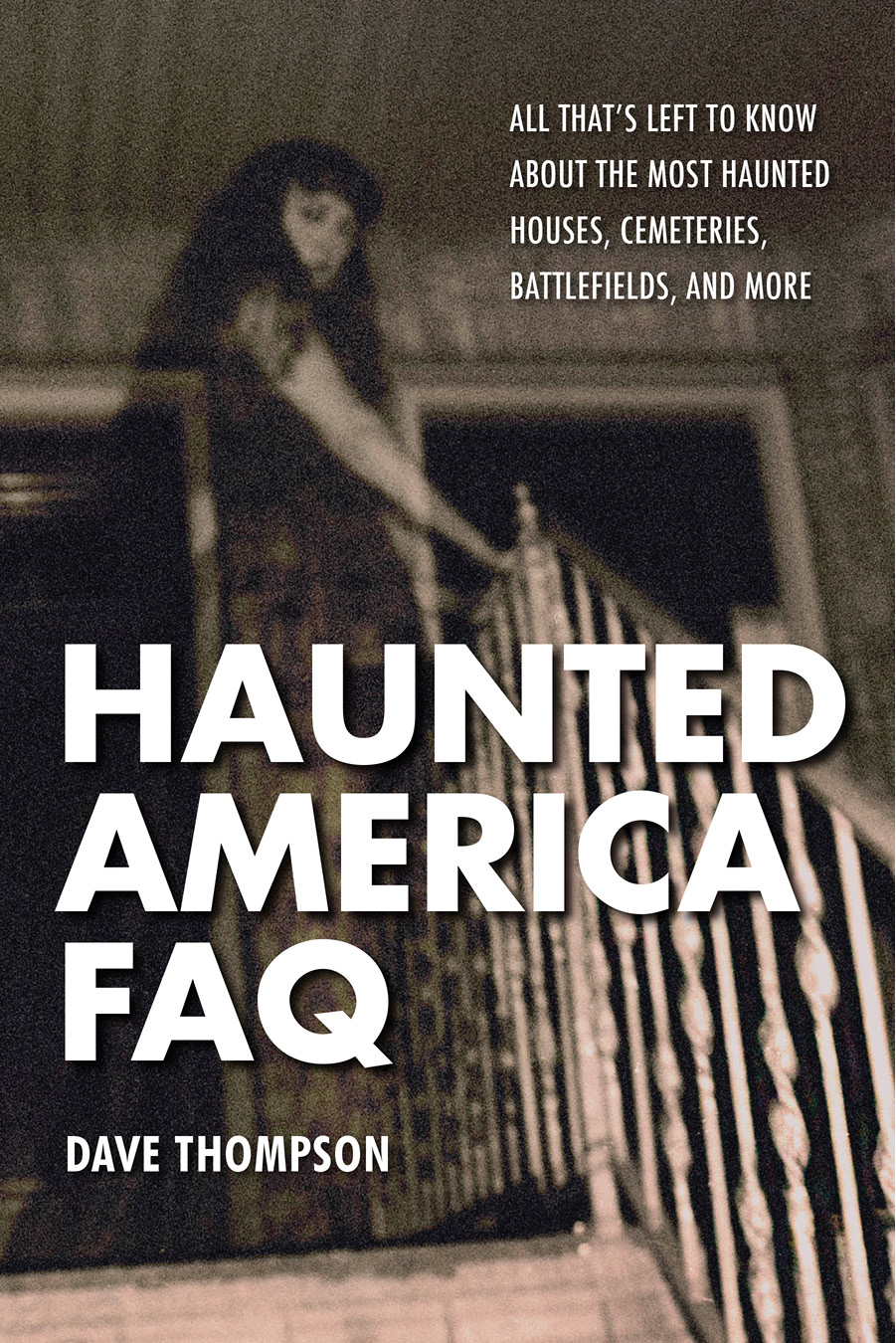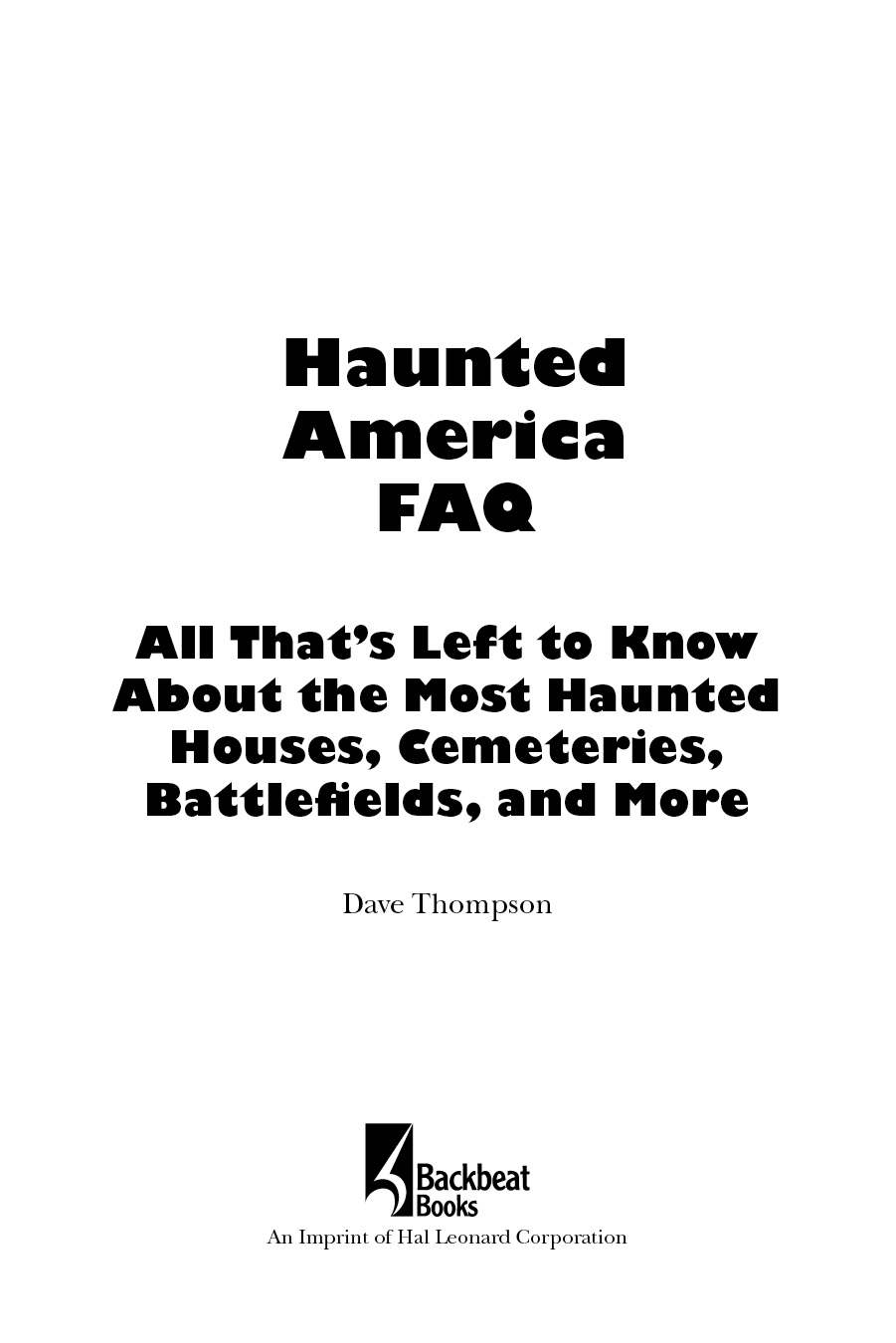Copyright 2015 by Dave Thompson
All rights reserved. No part of this book may be reproduced in any form, without written permission, except by a newspaper or magazine reviewer who wishes to quote brief passages in connection with a review.
Published in 2015 by Backbeat Books
An Imprint of Hal Leonard Corporation
7777 West Bluemound Road
Milwaukee, WI 53213
Trade Book Division Editorial Offices
33 Plymouth St., Montclair, NJ 07042
The FAQ series was conceived by Robert Rodriguez and developed with Stuart Shea.
Printed in the United States of America
Book design by Snow Creative Services
Library of Congress Cataloging-in-Publication Data
Thompson, Dave, 1960 January 3
Haunted America FAQ : all thats left to know about the most haunted houses, cemeteries, battlefields, and more / Dave Thompson.
pages cm. (FAQ series)
Includes bibliographical references and index.
ISBN 978-1-4803-9262-5
1. Haunted placesUnited States. I. Title.
BF1472.U6T469 2015
133.10973dc23
2015029851
www.backbeatbooks.com
To all the bumps in the night and creaks on the stairs
Contents
First and foremost, a medieval boneyard full of thanks to all the family and friends who walked through walls to bring me their favorite tales of ghosties, ghoulies, long-legged beasties and things that go bump in the night.
Especial thanks to Amy Hanson, who not only grew up in a house with a haunted parlor, but then moved to an apartment with a haunted bathroom. Seriously! The ghost used to drop pennies into the bathtub. He could at least have given me twenties, she says.
To Chrissie Bentley, whose experiences in a haunted former fairground were probably not what the ghosts expected; Jo-Ann Greene, who kept a level, skeptical head throughout this books development; the old lady in the farmhouse basement (enough said); and everybodys favorite cold spot. To Chloe Mortenson, who is now perfectly placed to investigate the legends of the screaming spirit that haunts her college museum, the rattling chains in its Old Main Hall, and the bad-tempered boy in the freshmans residence hall. And to J. R. Pepper, not only for her marvelous photographs, but for her explanations, too.
To all at FAQ Central Headquarters, but most especially John Cerullo, Marybeth Keating, Wes Seeley, Jessica Burr, and Gary Sunshine; to the tireless staff at a nations worth of haunted attractions for always knowing when the gullibility bone is about to break.
And to Karen and Todd; Linda and Larry; Betsy, Steve and family; Jen, Gaye and Tim, Oliver, Trevor, Toby, Barb East, Bateerz and family, the Gremlins who live in the heat pump, and to John the Superstar, the demon of the dry well.
No orbs were harmed during the writing of this book. Although one or two were smirked at.
Do I believe in ghosts? No, but I am afraid of them.
Marie Anne de Vichy-Chamrond, Marquise du Deffand (16971780)
According to the traditions of the Caddo people, a nation that spanned much of modern Arkansas, Louisiana, Oklahoma and parts of Texas from around 900 CE, there never used to be such a thing as death. Once born, everyone and everything just kept on living. Which means things got mighty crowded, mighty quickly.
Soon, so many people swarmed the earth that there simply was no room for any more, but of course they kept on being born. Finally, the chiefs held a council, to try to decide what they should do.
One man suggested introducing death, and the assembly discussed that for a while. But their deliberations always came back around to one insurmountable obstacle. Death was so permanent , and nobody could bear the thought of a life being extinguished forever.
Nobody, that is, except for the Coyote. He believed that death should be final. Otherwise, he asked the council, what could they possibly be trying to achieve? The food would still run out in the end. Living space would still become cramped and unbearable. The world simply wasnt big enough for everybody to live, not even if they did it in shifts.
His arguments fell on deaf ears. Death could not be final. Nobody, the other chiefs all agreed, would be able to bear the sorrow of knowing that they would never see their friends, relatives, loved ones again. The world might become less populated, but it would also be full of broken hearts and misery.
No, it was decreed. People would die, and they would remain dead for a while. But then they would come back, to be replaced in death by other people.
As soon as this final decision had been arrived at, the medicine men set to work. First, they built an enormous house of grass, with its entranceway facing toward the east. Then, they took a large black-and-white eagle feather and affixed it to the top of the house.
Every time somebody died, the feather would turn bloody, and then fall over. That would be the sign for all the medicine men to gather, and together they would call the deceased to the grass house, his spirit borne aboard a whirlwind that blew in from the west, circled the house, and entered it from the east.
The spirit would be restored to the form that he or she bore during life, and then its owner would be returned to the land of the living. The entire process, from death to rebirth, would take around ten days.
Coyote, however, remained uneasy; remained confident that people were simply postponing the inevitable. One day, and one day soon, the world would become so full that all the whirlwinds in the universe would not be able to carry the crushed and the starved and the suffocated. That the undead would pile up, while the living grew more cramped, until everything fell into chaos.
There was just one thing to do. The first time the feather fell, Coyote simply observed. But the second time, he acted. He watched quietly as the medicine men gathered at the grass house; remained silent as they began to sing and chant, and call the spirit to them. Then Coyote selected for himself the seat that was placed closest to the entrance to the grass house; and, as soon as he heard the whirlwind approaching, he reached out one hand, pushed the door shut and then locked it.
Outside, the whirlwind raged, and the spirit howled, but neither could open the door. Finally the storm passed, and the spirit whirled on by, never to be reborn. Death had arrived on Earth and so, in the form of all of its victims, forever locked out of the grass house, had ghosts. Because the door to life, once closed, can never be reopened.
So, do you believe in ghosts? Spirits? Visitors from the afterlife? Trespassers from beyond the veil?
Wait.
No.
Dont answer that. There are only three possible responses to that question anyway, and not one of them is really appropriate here. If you say yes, thenas Charles Dickens mused of Jacob Marleys spectral comeback in A Christmas Carol , nothing wonderful can come of the story I am going to relate, because you already know what to expect.
Boo!
If you say no, then youre probably not even reading this. And if you say I dont know, then nothing you will read, here or anyplace else, is likely to sway you one way or the other. You need to meet a ghost, see a ghost, be haunted by a ghost... and even then, you may still not be convinced. For Dickens considered that as well, when he set old Ebenezer Scrooge to contemplate the wraith that sat before him:
You may be an undigested bit of beef, a blot of mustard, a crumb of cheese, a fragment of an underdone potato. Theres more of gravy than of grave about you, whatever you are.


